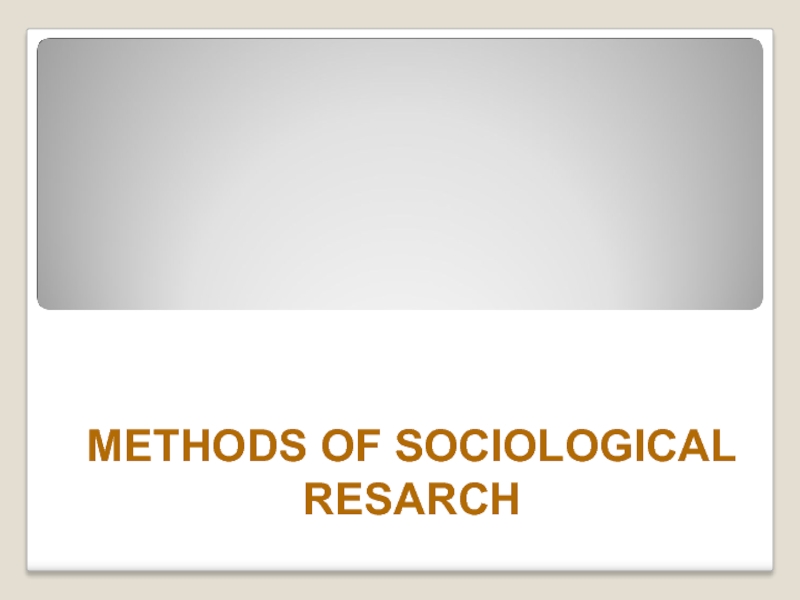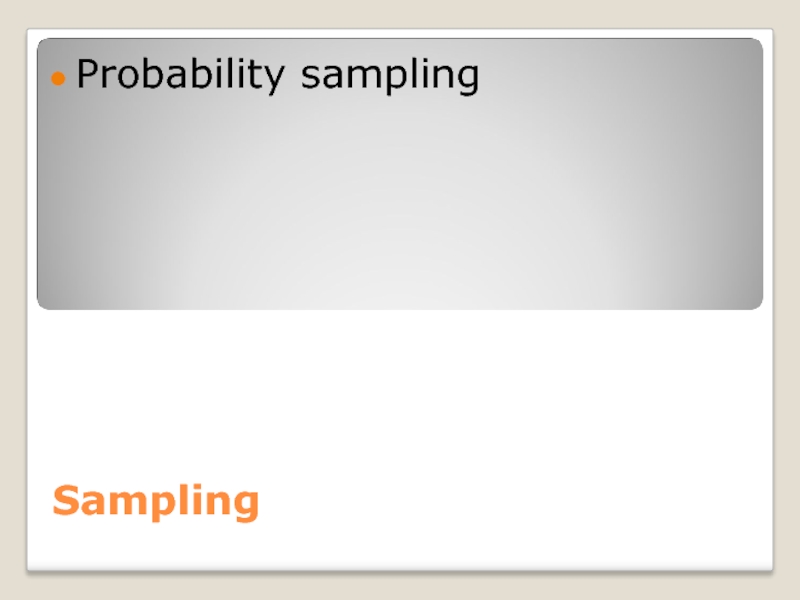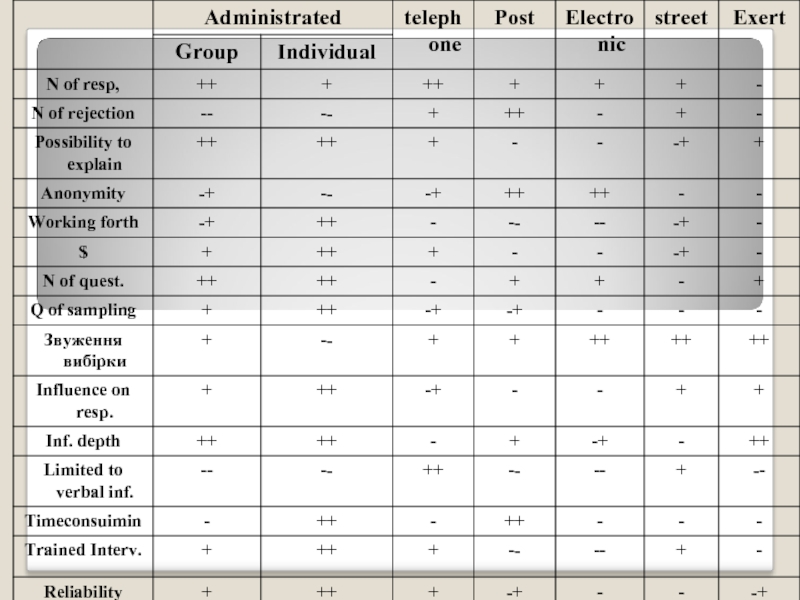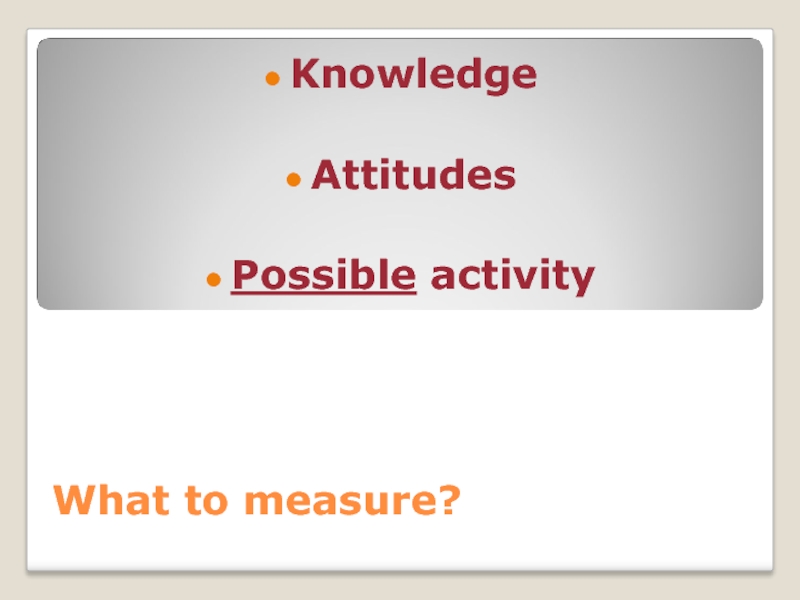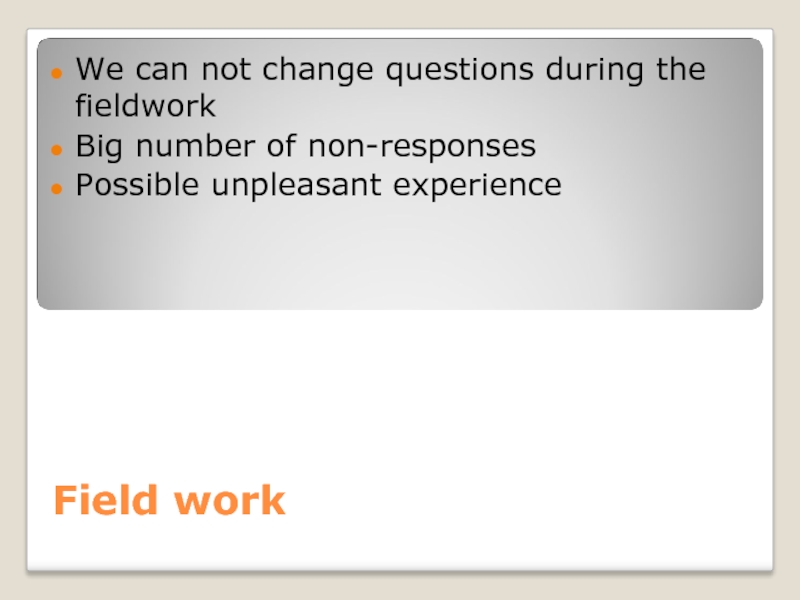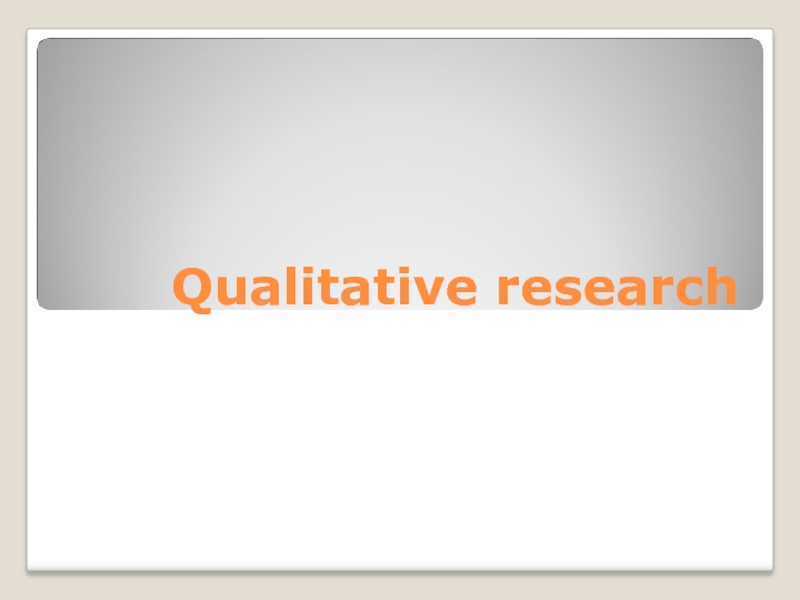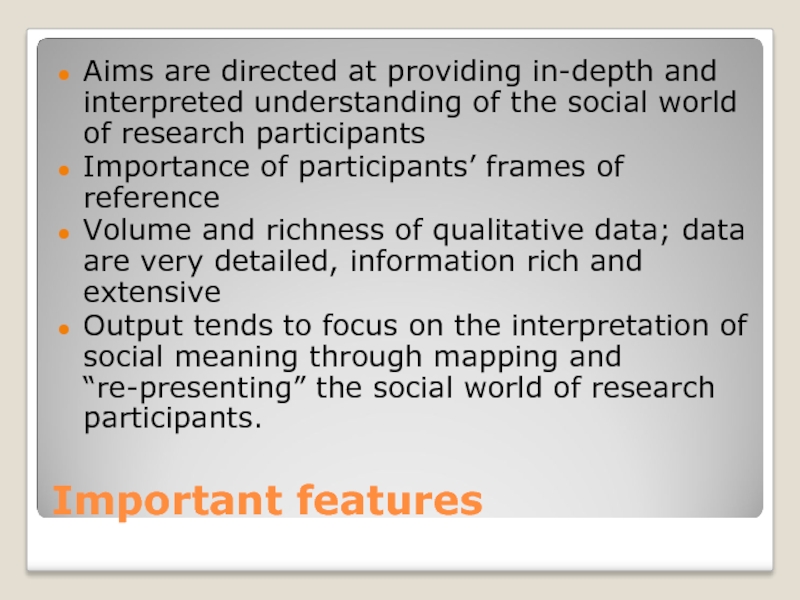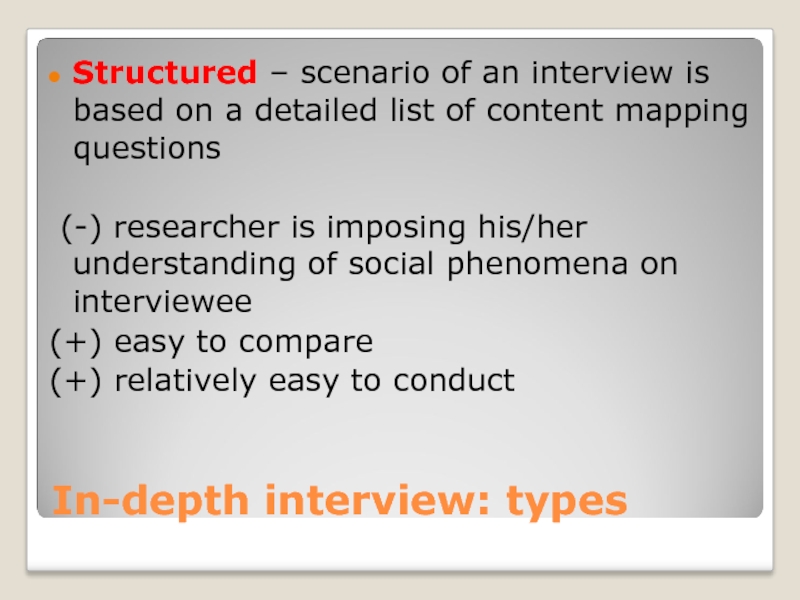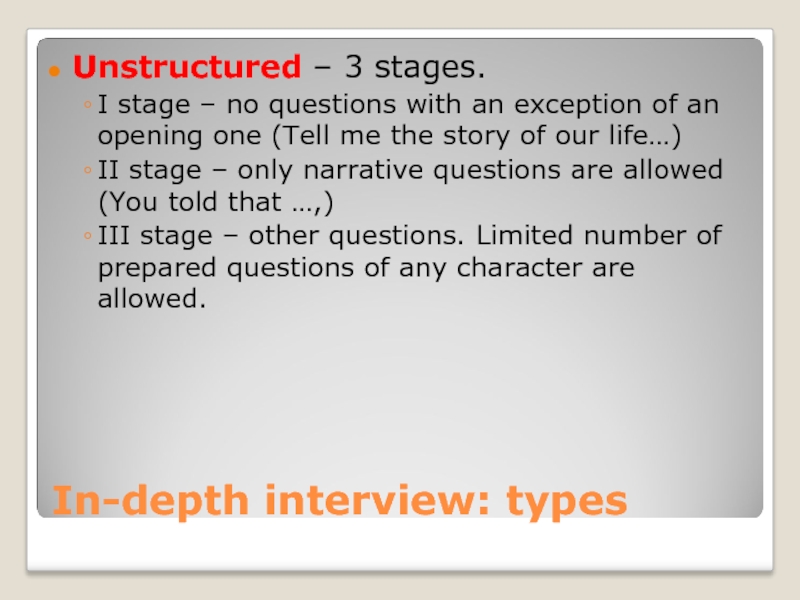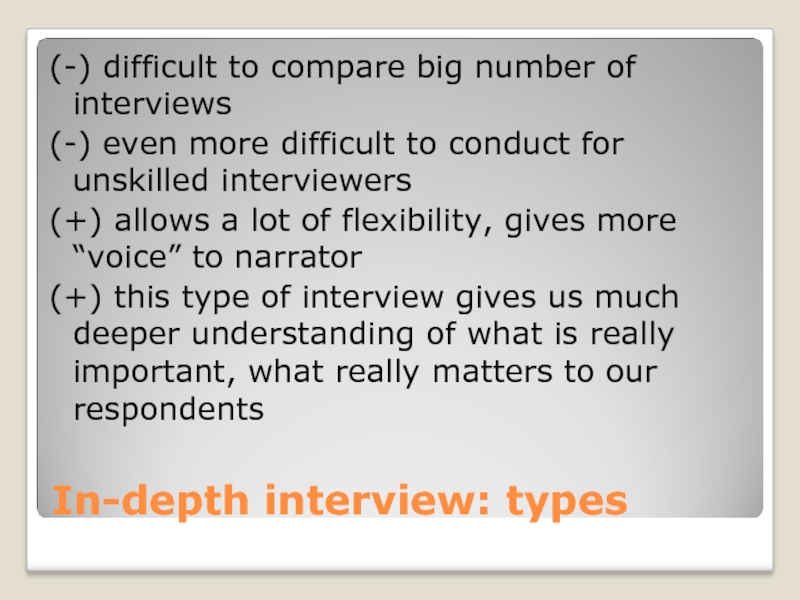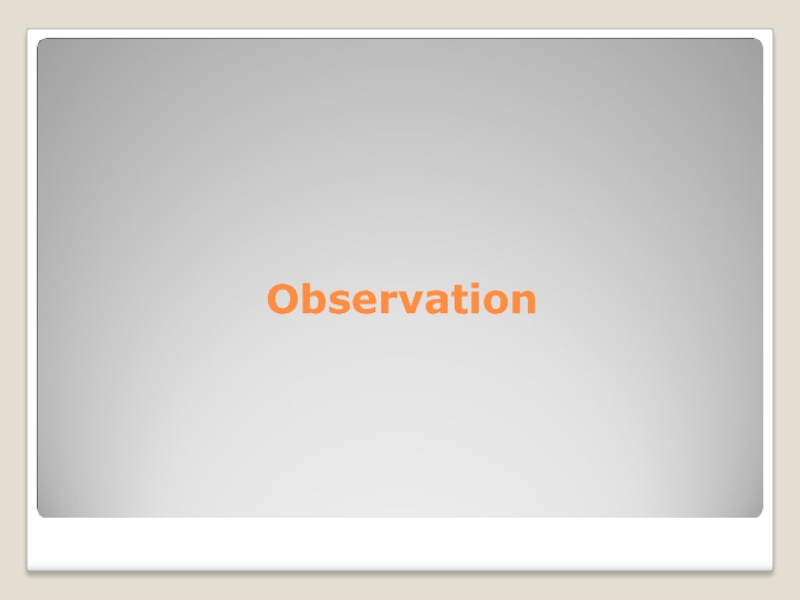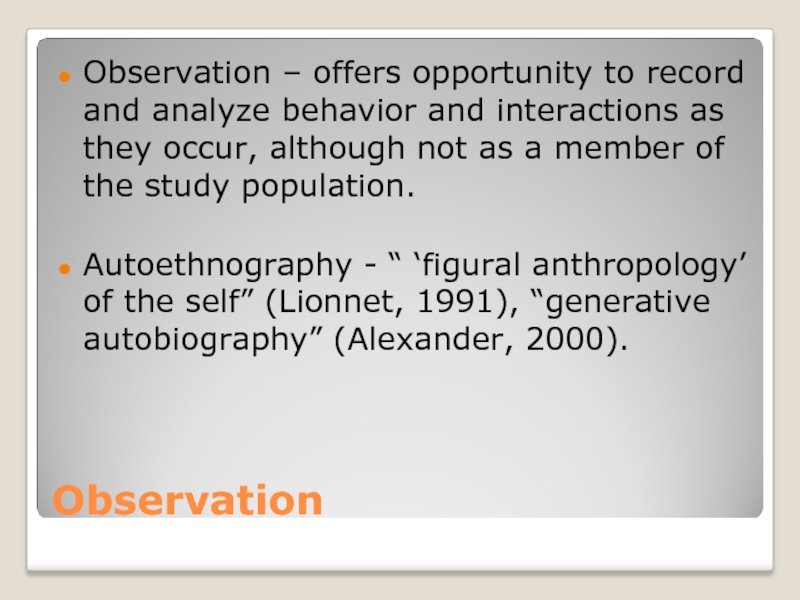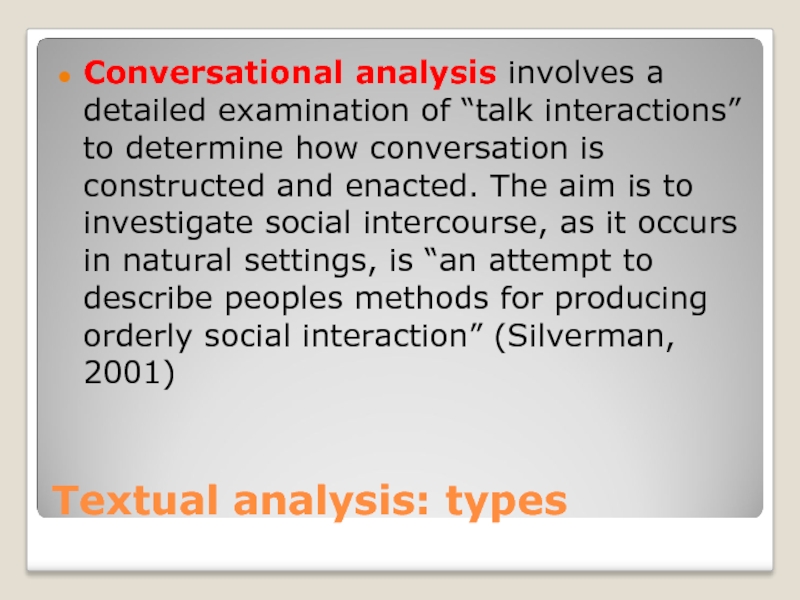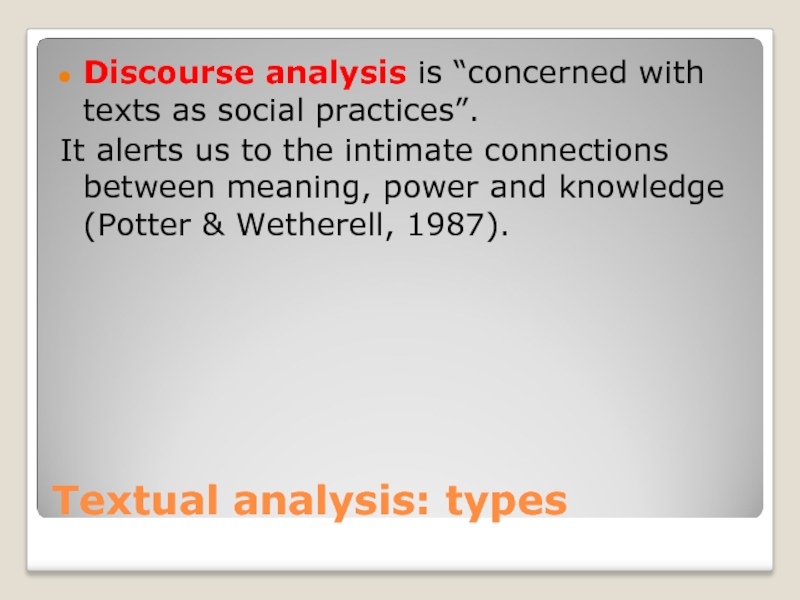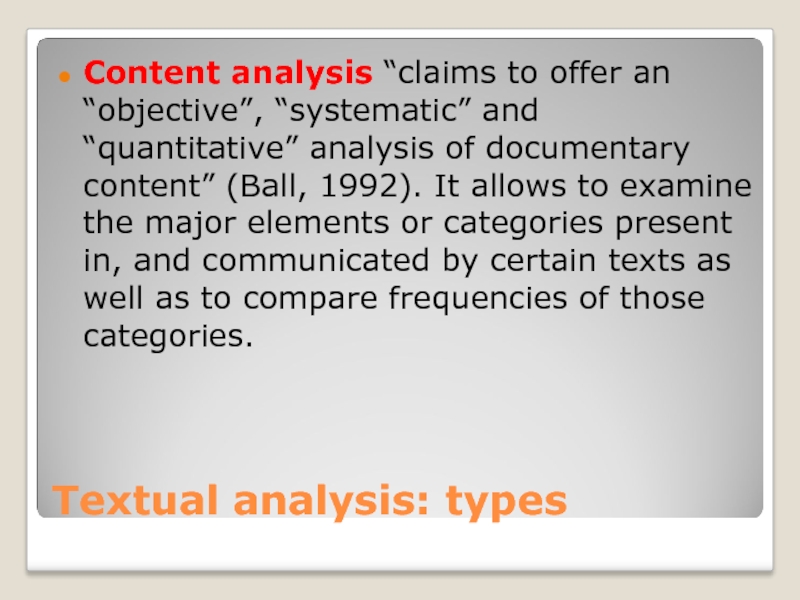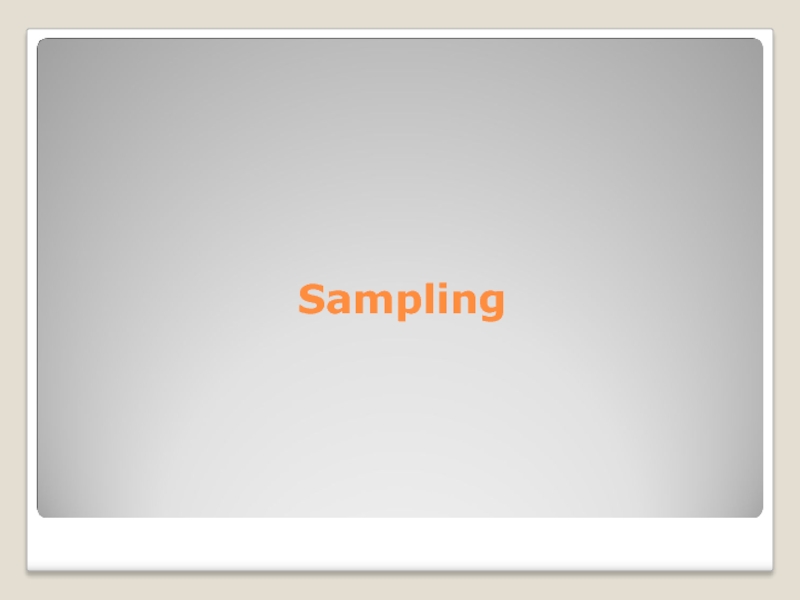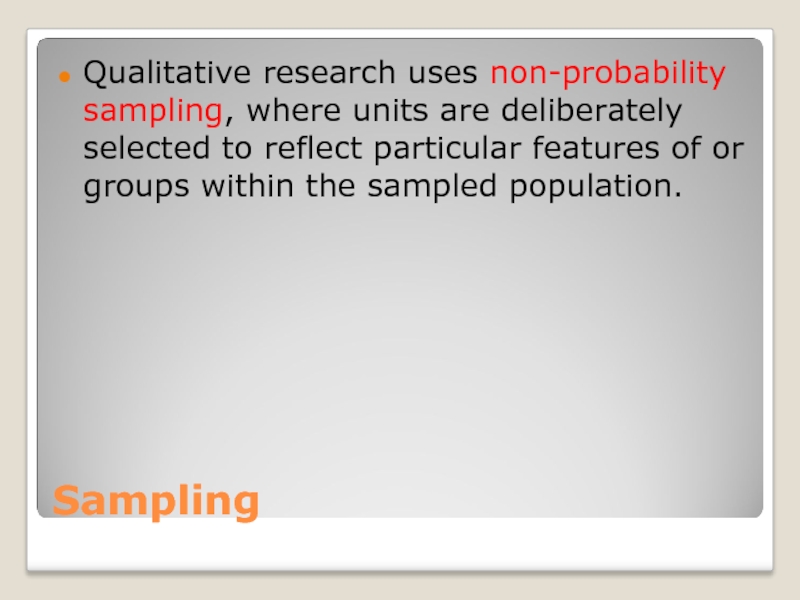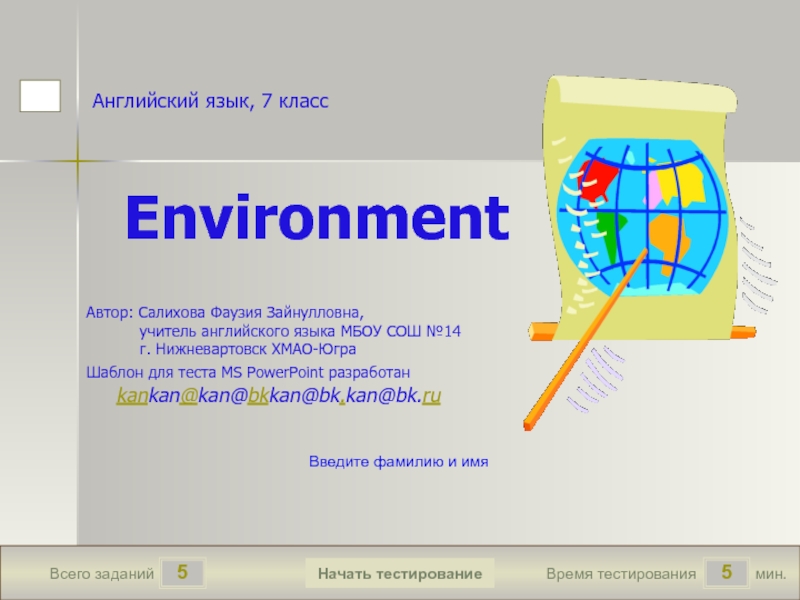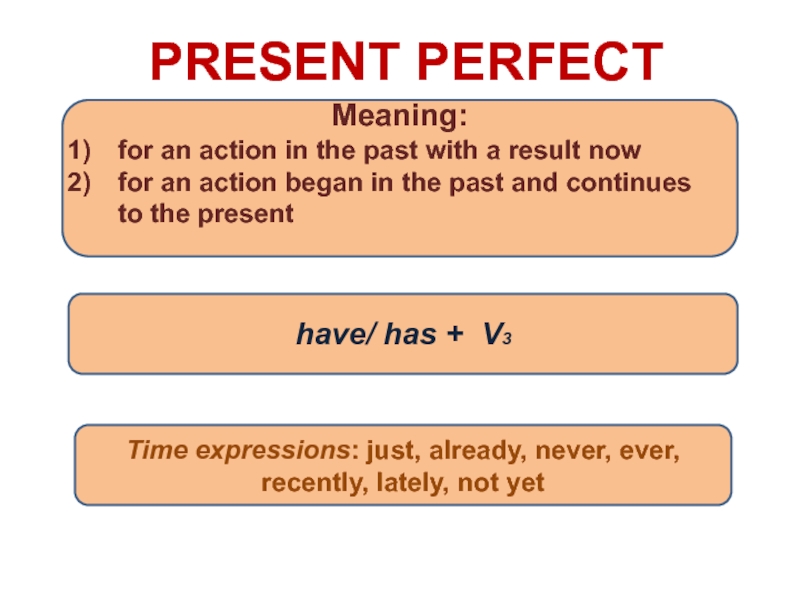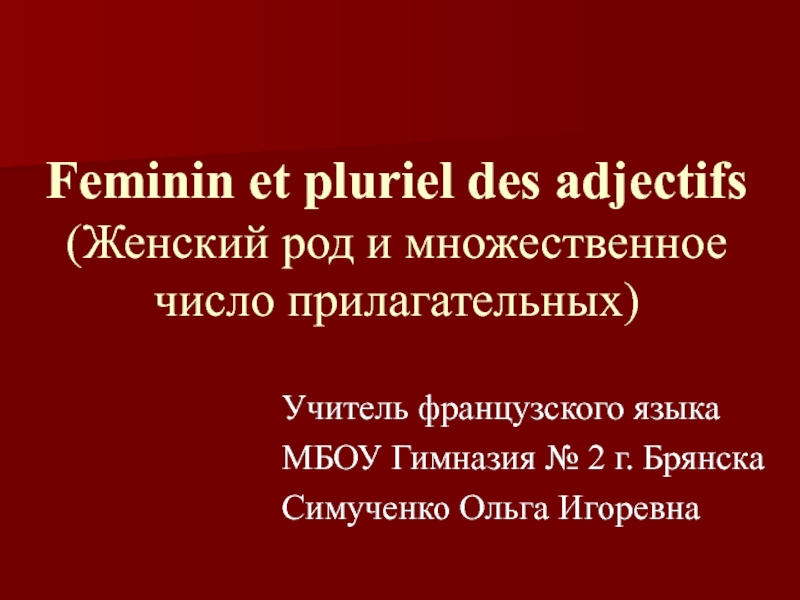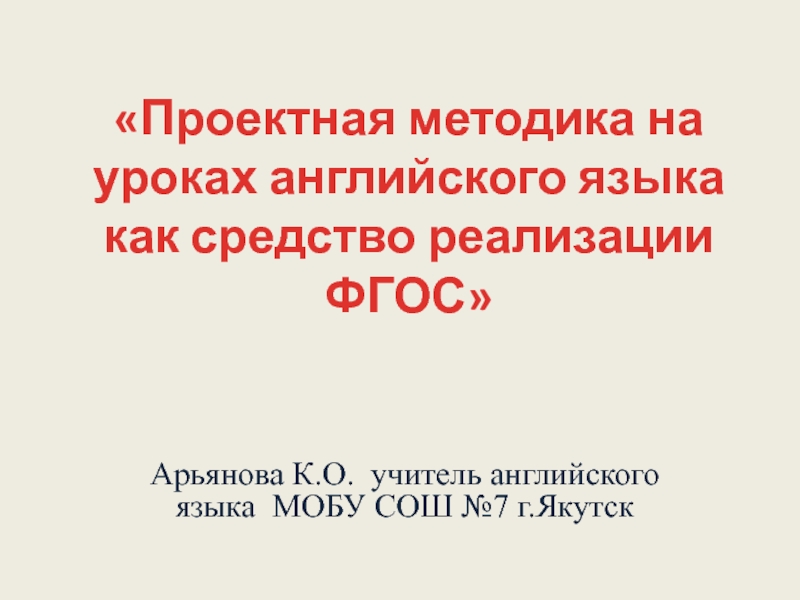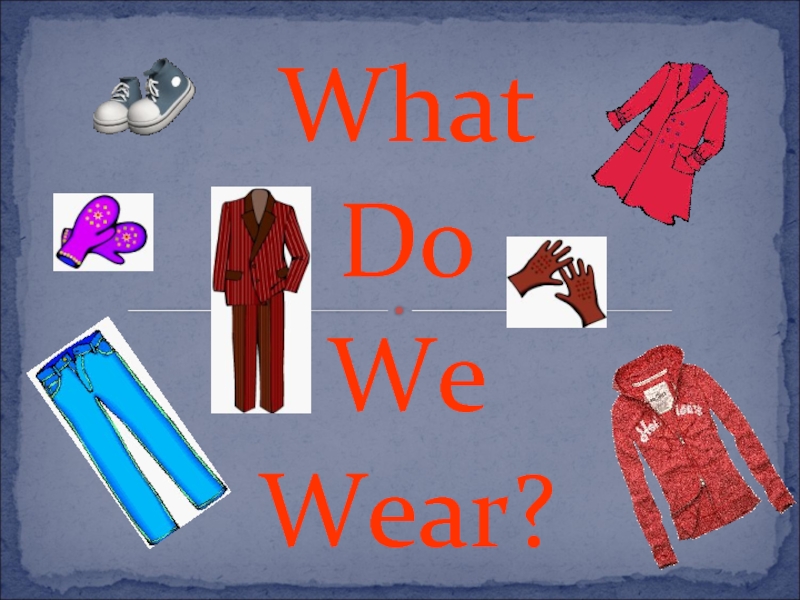Слайд 1METHODS OF SOCIOLOGICAL RESARCH
Слайд 3Sampling
Probability sampling
Слайд 5What to measure?
Knowledge
Attitudes
Possible activity
Слайд 6Steps to create questionnaire
Defining aim and objectives
Defining theoretical approach
List
of future variables
List of possible analytical procedures
Work with existing questionnaires
Defining
questions
Pilot survey
Final changes
Слайд 7Questions
Open
Last book you have read?
Semistuctured
What is you nationality?
Ukrainian
Russian
Other_______________
Structured
Mark your
attitude towards political party X on the scale
Where 1
is very positive – 7 is very negative
1 2 3 4 5 6 7
Слайд 8How to formulate questions?
Whether everyone would be able to understand
question and answer?
Whether everyone would be able to understand question
same way?
Whether everyone would be willing to answer the question?
Слайд 9Length of the questionnaire
Price
Time
Number of non-response
Quality of answers
Слайд 10Field work
We can not change questions during the fieldwork
Big number
of non-responses
Possible unpleasant experience
Слайд 12Definition
Qualitative research is an interpretative approach concerned with understanding the
meanings which people attach to phenomena (actions, decisions, beliefs, values
etc.) within their social worlds. (J.Ritchie & J.Lewis: 2003)
Qualitative research is usually interested in three sings: social routines, their conditions, and the subjective experiences of those, who take part in them. (Carspecken & Cordeiro, 1995)
Слайд 13Important features
Aims are directed at providing in-depth and interpreted understanding
of the social world of research participants
Importance of participants’ frames
of reference
Volume and richness of qualitative data; data are very detailed, information rich and extensive
Output tends to focus on the interpretation of social meaning through mapping and “re-presenting” the social world of research participants.
Слайд 15In-depth interview: definition
Form of conversation with a purpose (~1,5-2 hours).
Provides an opportunity for detailed investigation of people’s personal perspectives,
for in-depth understanding of the personal context within which the research phenomena are located, and for VERY DETAILED SUBJECT COVERAGE.
Слайд 16In-depth interview: types
Structured – scenario of an interview is based
on a detailed list of content mapping questions
(-)
researcher is imposing his/her understanding of social phenomena on interviewee
(+) easy to compare
(+) relatively easy to conduct
Слайд 17In-depth interview: types
Semistructured – scenario of an interview is based
on broadly defined thematic lines, no specific questions are defined
(“childhood”,
“education”, “work”, “family”)
(-) more difficult to compare big number of interviews
(-) more difficult for unskilled interviewers
(+) allows a lot of flexibility, gives more “voice” to narrator
Слайд 18In-depth interview: types
Unstructured – 3 stages.
I stage – no
questions with an exception of an opening one (Tell me
the story of our life…)
II stage – only narrative questions are allowed (You told that …,)
III stage – other questions. Limited number of prepared questions of any character are allowed.
Слайд 19In-depth interview: types
(-) difficult to compare big number of interviews
(-)
even more difficult to conduct for unskilled interviewers
(+) allows a
lot of flexibility, gives more “voice” to narrator
(+) this type of interview gives us much deeper understanding of what is really important, what really matters to our respondents
Слайд 21Focus group discussion: definition
FGD – involves several (6-10) participants brought
together to discuss the research topic as a group. Provides
an opportunity for direct and explicit discussion of differences as it emerges in the group.
We study more opinions, but in comparison to an in-depth interview less questions can be asked
Слайд 23Participant observation
Participant observation – researcher joins the constituent study population
or its organizational or community setting to record actions, interactions
and events that occur.
(+) we can study and experience social phenomena in their natural setting
(-) time-consuming, rises many ethical issues
Слайд 24Observation
Observation – offers opportunity to record and analyze behavior and
interactions as they occur, although not as a member of
the study population.
Autoethnography - “ ‘figural anthropology’ of the self” (Lionnet, 1991), “generative autobiography” (Alexander, 2000).
Слайд 26Textual analysis: types
Conversational analysis involves a detailed examination of “talk
interactions” to determine how conversation is constructed and enacted. The
aim is to investigate social intercourse, as it occurs in natural settings, is “an attempt to describe peoples methods for producing orderly social interaction” (Silverman, 2001)
Слайд 27Textual analysis: types
Discourse analysis is “concerned with texts as social
practices”.
It alerts us to the intimate connections between meaning,
power and knowledge (Potter & Wetherell, 1987).
Слайд 28Textual analysis: types
Content analysis “claims to offer an “objective”, “systematic”
and “quantitative” analysis of documentary content” (Ball, 1992). It allows
to examine the major elements or categories present in, and communicated by certain texts as well as to compare frequencies of those categories.
Слайд 29Content-analysis
However, content analysis does not allow the possibility for a
researcher to uncover variability in the construction of different texts,
to compare it and to assess the functions this variation is framing.
Nor does it take into account motives for the reproduction of a specific theme or/and context in which these themes were reproduced. It also fragments and decontextualizes data.
Слайд 31Sampling
Qualitative research uses non-probability sampling, where units are deliberately selected
to reflect particular features of or groups within the sampled
population.
Слайд 33
Thank you for your attention!
Questions, comments?
